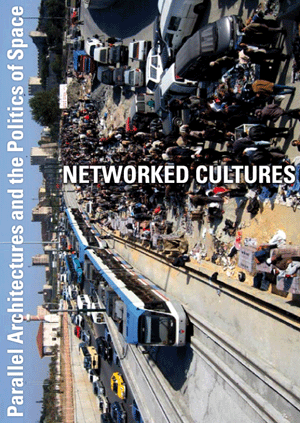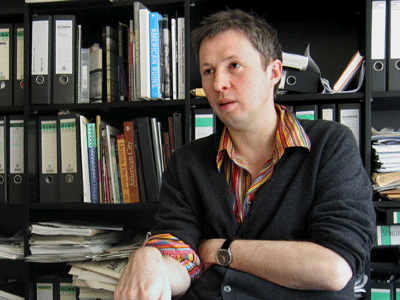_loginregistrieren_database_5 Factories - Worker Control in Venezuela Dario Azzellini & Oliver Ressler _ALMOSTREAL ECF _AnArchitektur Jesko Fezer _Arizona Road Azra Aksamija _Balkan Konsulat rotor _Bata-ville: We are not afraid of the future Nina Pope + Karen Guthrie / www.somewhere.org.uk _Black Benz Race krcf in collaboration with Felix Stalder, Arben Gecaj, Faton Topalli and Osman Osmani _Black Sea Files Ursula Biemann _Camp La Jolla Military ParkOwen Mundy _CHANGE REALITY: Renaming the Streets of Zagreb REINIGUNGSGESELLSCHAFT _Conceptual Paradise. There is a place for sophistication Stefan Roemer _de-regulation Irit Rogoff, Kutlug Ataman, Stefan Roemer_news ____________Bloomberg SPACE, London ____________Kumu Art Museum Tallinn ____________Open Space, Open Systems - Vienna ____________CAA 2011 Conference, New York ____________Forum Stadtpark, Graz ____________Symposium, Istanbul ____________lungomare, Bozen/Bolzano ____________Metropolis Biennale 2007-17, Copenhagen ____________new publication available now ____________Mestna Galerija, Ljubljana ____________Livestream of Networked Cultures documentary ____________ |
_ConversationsPhilipp Oswalt
Philipp Oswalt
PM/HM: Your recent projects Urban Catalyst and Shrinking Cities deal with questions of urban shrinkage and provisionality by employing a variety of approaches ranging from calls for ideas and academic research to on site interventions, exhibitions and public debates. Did this methodological hybridity grow out of the urban situations addressed by your projects themselves or is it more a manifestation of a particular kind of collaboration? Philipp Oswalt: There is an unplanned phenomenon in cities, which is the emerging of vacant spaces used on a temporary base by different actors. The vacant lots and buildings become available resources for actors who have little capital but have the energy and the willingness to generate public activities or cultural activities, social activities and so on. The question of the Urban Catalyst project was: is there anything planners can learn from these unplanned phenomena? Should we instrumentalize it, copy it, support it or enable it? So the project was not limited to the analysis of this informal urbanism, but it was also engaging in the question what to do. Similar to Urban Catalyst, we also pursued different case studies within the Shrinking Cities project, which was essential for the project and could be more intensely developed there. By doing this, you could not only understand better the different urban condition, but also the different cultures of urban research. Regarding the involvement of artists, we’ve had this interdisciplinary principle in different levels of the project, so the curatorial team was a mixture of art curator, an editor from an architecture magazine, a sociologist and an architect (myself), and we have had contributors to the project from dozens of different disciplines. On the one hand, such an interdisciplinarity is necessary and unavoidable if you engage in a certain subject, which will be never completely covered by one discipline. Someone from the outside can come into your discipline, they can be fairly naïve and question certain taboos the discipline has. This can be very productive. On the other hand, interdisciplinarity is creating extreme problems in communication: each profession has its own criteria, and they do not match. Certain questions are very important for the art, and others for architects, and they are often contradicting. So it becomes an issue, and if you have different criteria, you cannot simply combine them, because nobody could fulfil them equally; so you need to prioritise and say, ok, this is more important than that. The point is how to manage this process that something consistent comes out of it. PM/HM: Aren’t such demands for consistency also prone to instrumentalising the potential of experimental urban practices in favour of hegemonic urban interests? Philipp Oswalt: If we talk about Shrinking Cities, for instance, it is more a think-tank for urgent questions. Building up awareness, initiating a discourse (setting an agenda) and developing knowledge were important to us. By doing this, we wanted to have an impact on how people think and how they act. What becomes critical then is how to communicate the work. I am not afraid of being didactic. I respect that art normally is not didactic and probably also shouldn’t be didactic. But the current fear and tabooing of didactics in the cultural context I find very problematic. If you look back into the history of political protest or the labour-movement, it was essential to be outspoken and clear in trying to reach somebody. Today it has to be done with a different attitude, as we have doubts, we see contradictions as an important part of the work. But being didactic doesn’t not have to imply to know the conclusions or to provide the final answer. Now coming to your question: it has become very fashionable to involve artists into urban development, and there is no neighbourhood in Germany which has not been attacked at least once by some artist involvement. From the German building ministry to the investors, to the municipalities, everybody engages artists for urban development projects. Basically you could say: If they got stuck with their problems and have no clue what to do, they invite artists, and they simulate some urban activity and some meaning, which has been lost. It gets especially dumb if you get vacant shops fronts, and people and artists are invited to have some temporary activity there for a few weeks. By doing this, the conflicts and political issues or crisis of the real estate business or the urban planning profession gets hidden, becomes covered by as surface of cultural activities with no lasting effect. This is a very dangerous and anti-political attitude, to hide certain discussions and make amusement by having interesting art or not-interesting art, which becomes a kind of pseudo activity. PM/HM: How has this danger of hiding and shading away differences in the urban fabric been circumnavigated by the Shrinking Cities project and what was the response? Philipp Oswalt: There is a multitude of possibilities how artists can get engaged in such a project. Of course there is a significant difference if the artwork engages in the analysis of a given situation or if it engages in active interventions. In the first phase of the Shrinking Cities project we focussed on the first aspect, and later on on the second, which might be considered as the more problematic sphere. Generally speaking, there is a fundamental difference between the logics of urban planning and the art world. In the art world it is very common and more or less the norm (not to say a must) to thematise conflicts and contradictions and criticise existing conditions, while in the urban development context you should only speak about positive things, offer solutions and positive scenarios. Both attitudes are limited and one-sided in a similar way. The problem became already very manifest with our project title “shrinking cities”. While it was unsurprisingly positively received in the art context, it was in the same time the very reason, why we had (and still have) ongoing problems with urban planning departments and municipalities or even professional organization of architects. In Manchester the head of the architects wanted to stop us working and in some German cities local politicians stopped exhibitions already in preparation. The very interesting and challenging character of a subject like shrinking cities is, that you are facing fundamental problem, and not only pragmatic and technical questions. These problems are to a large extent question of values, of conceptual models of judgements and are quite political, for example the question of real estate, of property: how is property organized and conceptualised? How would other forms of dealing with property open up new possibilities? Or another major clue to the problem is migration: Do we accept migration or not, and how do we deal with it? If you work with a politician – a mayor, a minister or the head of an urban planning department - and you raise this kind of questions, it would be very difficult to find anybody who would be willing to engage in this even so these are major forces defining the causes and effects of shrinkage and are therefore major clues for new modes of action. But for us it was necessary to take the liberty to ask questions that go beyond the normal way of practice, even so we lost the contact to the daily routines of government. So the possible political impact of such an approach is rather indirect. What we tried to do is to influence the thinking about the subject and by doing this, of course we also hope to change the practice of action in the long run. I strongly believe, that for certain modes of work it is absolutely necessary to keep out of direct policy consulting, to develop a discourse, to stimulate ideas and different ways of thinking, and to hope that this in the long run has some effects on what is actually done in the cities.
|
_broadcasts_conversations+ Ana Dzokic and Marc Neelen+ Ayreen Anastas and Rene Gabri + atelier d'architecture autogérée (aaa) + Asya Filippova + Sophie Hope and Sarah Carrington + Branca Curcic + Christoph Schaefer + Campement Urbain + Claudia Zanfi + Despoina Sevasti and Poka-Yio + Erden Kosova + Helmut Batista _textsRadio as Spatial Practiceby: Paulo Tavares Survival Kits: Artistic Responses to Globalizationby: Marga van Mechelen What Ever Happened to Cultural Democracy?by: Sophie Hope I don't know how to explain ...by: Anca Gyemant Trading Placesby: Peter Moertenboeck & Helge Mooshammer Milosevic as Architectby: Srdjan Jovanovic Weiss When the Unavoidable Knocks at the Door ...by: Gulsen Bal Tracing Translocality: The BlackBenz Raceby: Felix Stalder travelling lexicon towards a global positioning systemby: Celine Condorelli |
